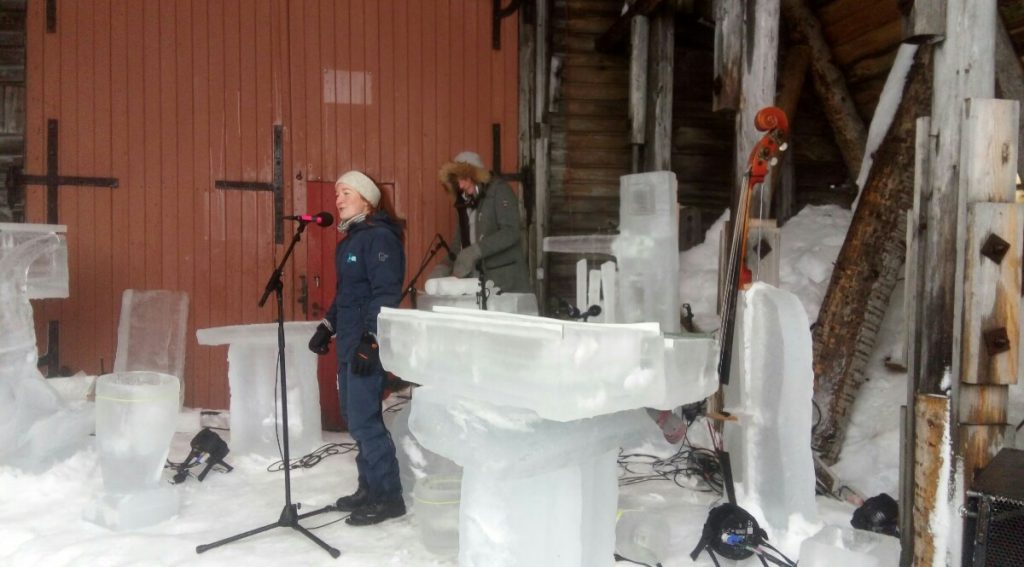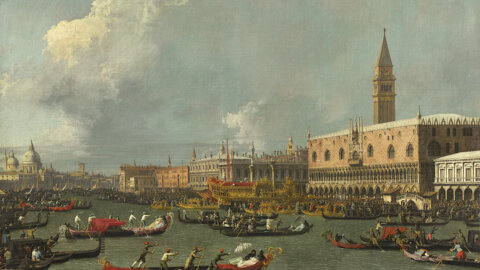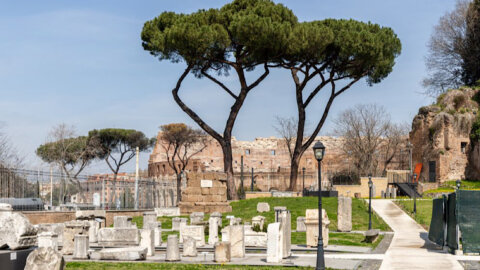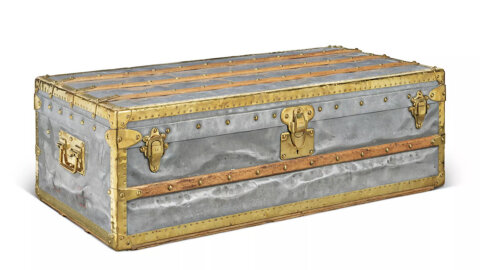Last February 16 took place Ice Music Festival Norway in Finse, a few steps from the imposing Hardangerjøkulen glacier: the ice structures of the norwegian festival melted due to the absurd high temperatures and the event risked of being canceled.
One of the most inspired cultural events in Europe where musicians play with instruments made out of ice, Ice Music Festival Norway, it has been held for the last 2 years in Finse, tiny village famous in Norway for its wild character.
In Winter it can only be reached by train and it has been used as a training ground for expeditions in Antarctica, with temperatures close to -30 °C and very fierce snowstorms, this year evidently something went wrong, the temperature remained constantly above 0 and only a few times during the night it dropped to minus degrees.
Norwegian singer Maria Skranes says that, perhaps, what happened to Ice Music Festival Norway 2019 could be an opportunity for everyone to realize how Nature works.
Spectators from all over the globe visited the ruins of the ice festival structures, and witnessed with their own eyes the impact of Climate Change.
Having already planned for some time (with tragic foresight), it was also held a meeting with young scientist Silje Smith-Johnsen from the Bjerknes Center for Climate Research, in order to tell the festival audience about EastGrip Project.

Coming up, the interview given by scientist Silje Smith-Johnsen for FIRST Arte:
Hello Silje, could you tell me what is the EastGrip Project from your personal experience?
“Of course, EastGrip means East Greenland Ice Core Project, it’s lead by Denmark but the corporation is also financed by many other nations like Norway, the US…”
Also Italy, right?
“Yeah, Italy as well, our goal is to drill an ice core in the middle of the Greenish Ice Sheet and this time it will be the first time EastGrip will drill into an ice stream, which is kinda like a river of ice which flows much faster than the rest of the ice sheet; it’s great because this time we won’t get to know only about the history of ice and climate, but also about ice dynamics.
I went there last Summer for the first time and I’m going back this Summer for one month as well, it’s super remote, hundreds of Kms away from any trace of civilization, but you’re there with a group of maybe 20 or even 30 people at the same time living in tents which are heated. There’s even a cook, so it’s comfortable, and since it is so comfortable it is ideal for focusing on science.”
By getting knowledge about how Ice Streams work and how they will impact on future sea-level changes, do you think will the success of EastGrip project be of help to make everyone aware of the risks of climate change?
“The crucial point is that this project costs a huge load of money, and a big part of this money goes to public outreach, we’re willing to make people aware of the issue of glaciers melting all around the World, and this is also one of the reasons why I’m here today.
Why I talk about this project and I tell people of how the sea will react to massive ice melting and what we can expect from the future. Also how this will impact on a global scale, because if the ice of Greenland melts the sea-level will rise between 6 and 7 meters, so you can imagine Rome, or my hometown Bergen, be mercilessly flooded, the whole Holland would instantly disappear along with Venice, and many of these islands around the Equator.”
Would you think of what happened to this year’s edition of Ice Music Festival Norway, as an evidence that natural climate variation cycle is approaching faster to an abnormal warm shift?
“We can see about the climate in Finse that in January for example there have been usually negative degrees on average, and now after 1985 we can see more and more Winters where we have on average plus degrees in January.
In this 2019 snow came late, it’s a trend where you can see that Finse is warming and has been warming since mid ’80s, so before I was born it was already warming.
This might have happened before but now we see it more frequently, it happens more often and this Winter is one of those warm cases. We will definitely see even cold cases because as climate changes there will be more extreme events, more ups and also more downs.”
And what about all the people that say to not worry too much cause these climate changes happened also before?
“Sure they had happened also before because there’s natural variability, but now we have such a good overview on how much C02 we emit as humans; if we visualize this data as a graph through time, we can see that it correlates perfectly with how the global temperature has been generally warming in the recent period, and this is out of doubt.
We scientists are not even in doubt anymore, we are now trying to predict what will happen in the near future, furthermore we don’t question this at all, it’s already a fact.”
So can you tell me approximately what could happen with the glaciers on Greenland, in the worst-case scenario?
“What happens with Greenland is that the Greenish Ice Sheet ends in the ocean and now the ocean is warming, so the “toes” of the ice sheet which go into the ocean will soon melt getting smaller and eventually ending up on land.
After that happens the ocean will not impact anymore but then we’ll have the ice surface melting, all of this water produced by the melting ice on top of the ice sheet will go down to the base, making that layer of ice more slippery, so it will start flowing faster into the ocean than it normally would.
The Ice Stream we’re currently studying in North-East Greenland is extremely slippery.”
Also the glacier of Finse is going to disappear?
“Yes, unfortunately Hardangerjøkulen is predicted to be gone the next hundred years. My children might not experience its sight, it lasted for thousands of years but wiith these recent high temperatures the snow accumulated in Winter could not get past Summer time, which is the “feeding period” of the glacier, and if it doesn’t get any “food” the glacier will slowly shrink and die.”





